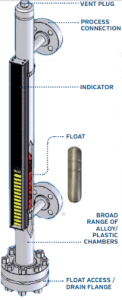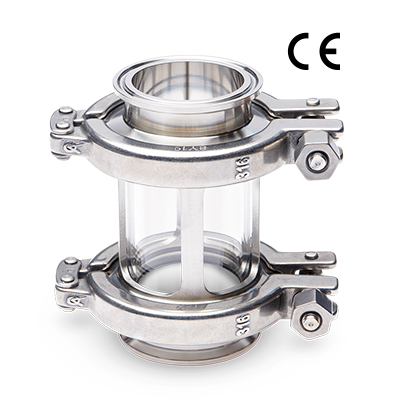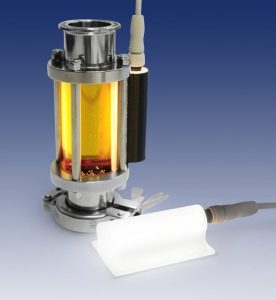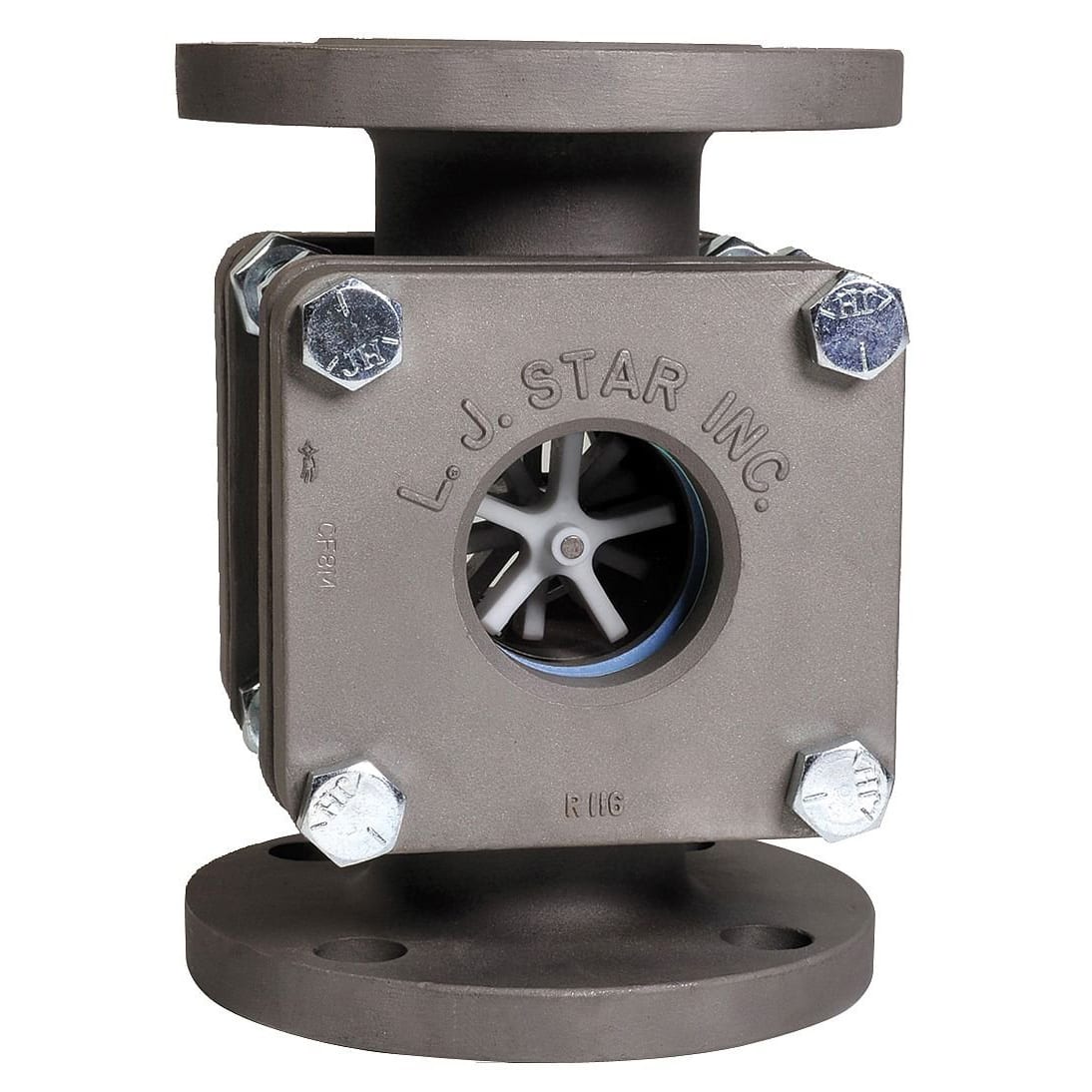LJ Star Sight Flow Indicators for industrial applications are the most common flow indicators style that enables visual observation of process flow through a pair of sight glasses mounted on a carbon steel body.
They are commonly used in industries that require a tool to monitor the speed and quality of liquid, gaseous products, or raw materials such as Chemical, Pharmaceutical, Food and Beverage, Agriculture, Marine and Industrial. With LJ Star Incorporated, you can be assured of high-quality industry-proven products that guarantee long-lasting use at an affordable cost.
What is a Flanged Sight Flow indicator?
A sight flow indicator is a body with one or more viewing windows, usually with gaskets, and a way to mount the indicator to the pipeline, such as flanged, threaded, or sanitary clamp connection. Flanged industrial sight flow indicators are often used in industrial applications between the API valve and tanker piping, allowing the operator to see fuel flow to or from tank.
LJ Star offers a full line of sight flow indicators to fit any processing application.
What is a Sight Flow Indicator?
A sight flow indicator is a tool used in a variety of processing plants to safely inspect the process material. When installed in process pipelines, sight flow indicators allow visual observation of the direction and rate of flow of liquid, powder, or gas process media, as well as the media’s color and clarity, through one or more observation windows. They consist of a glass column or two opposing windows with a means to mount the device to a pipeline.
What is a Sight Flow Indicator Used For?
The sight flow indicator is used for visual inspection by a human operator in a processing plant. Process fluids must be regularly inspected for characteristics such as clarity, color and foam or to confirm that there is proper flow in the pipeline. Sight flow indicators are also used to visually confirm conditions reported by instrumentation and to provide a backup in case of instrument failure or a power outage.
LJ Star’s weld-on and magnetic level gauges provide safe and accurate sight indication of fluid levels in a tank, process vessel or boiler.
What is a Liquid Level Gauge?
Liquid level gauges are industrial meters that are used to determine the level of a liquid in a process tank. Liquid level gauge calibration is used to ensure proper readings are obtained when using level gauges.
How Does a Magnetic Liquid Level Gauge Work?
Magnetic level gauges use magnetism to link the indicator in a gauge to a float inside of a vessel in order to accurately show the level of fluid within. As the position of the float changes, the indicator moves up or down by the same amount, meaning that the level in the measuring chamber will always be the same as the fluid level in the vessel itself.
Twinsburg, OH – January 26, 2021 – LJ Star (www.ljstar.com) announces that its patent-pending Clamp Type Sterile Visual Flow Indicator, or CT-SVFI, was awarded one of Processing Magazine’s 2020 Breakthrough Products Awards.
Processing’s annual Breakthrough Products Awards showcase innovate technologies that improve operations in the processing industry. Each year the magazine selects the 10 most significant product developments in the industry, recognized for helping end users better manage tough processing environments, achieve regulatory compliance, reduce unplanned downtime and drive overall profitability.
A sight flow indicator gauges the direction and speed and flow of the process material. It is a product installed in a pipe that provides a visual aid to verify liquid flow for direction and accuracy.
Sight flow indicators never go out of style, but they do require occasional replacement, either as part of the facility’s overall maintenance plan or to repair damaged units. When installed in process pipelines, sight flow indicators allow visual observation of the direction and rate of flow of liquid, powder, or gas process media, as well as the media’s color and clarity, through one or more observation windows.
 Magnetic level gauges use magnetism to link the indicator in a gauge to a float inside of a vessel in order to accurately show the level of fluid within. As the position of the float changes, the indicator moves up or down by the same amount, meaning that the level in the measuring chamber will always be the same as the fluid level in the vessel itself.
Magnetic level gauges use magnetism to link the indicator in a gauge to a float inside of a vessel in order to accurately show the level of fluid within. As the position of the float changes, the indicator moves up or down by the same amount, meaning that the level in the measuring chamber will always be the same as the fluid level in the vessel itself.
 Eliminate threads and gasket compression problems that lead to contamination with this innovative new solution from LJ Star. Designed for hygienic/sterile applications in pharmaceutical, food/beverage, brewery and biotech industries, the new Clamp Type Sterile Visual Flow Indicator, or CT-SVFI, uses a patent-pending design to prevent the o-ring and gasket compression issues that lead to contamination associated with conventional screwed or threaded fittings.
Eliminate threads and gasket compression problems that lead to contamination with this innovative new solution from LJ Star. Designed for hygienic/sterile applications in pharmaceutical, food/beverage, brewery and biotech industries, the new Clamp Type Sterile Visual Flow Indicator, or CT-SVFI, uses a patent-pending design to prevent the o-ring and gasket compression issues that lead to contamination associated with conventional screwed or threaded fittings.
What is a sight flow indicator?
A sight flow indicator provides a window into a process pipeline that allows operators a visual means of verifying liquid flow and flow direction. Simple and low-cost, it also allows operators to observe the color, clarity, consistency, viscosity and other characteristics of process fluids.
The basic description of a sight flow indicator is a glass column or two opposing windows with a means to mount the device to a pipeline. Bodies or heads in a tubular style are usually constructed out of a specific metal. Windows are made from special glass discs in a gasketed assembly, glass windows fused in a metal frame, or tubular glass. Occasionally polymer windows are used.
How does a sight flow indicator work?
A sight flow indicator gives the operator a window to observe how a process fluid moves through the pipeline.
At a basic level, how a sight flow indicator works is simple: just look through the window to observe the flow in a pipeline. Actually, there are complexities in the many types of indication and construction of the equipment. Each style of indicator works a little differently.
Vote for LumiFlo®!

We’re so excited to announce that the LumiFlo® LED light has been nominated for a 2019 Flow Control Innovation Award.
The LumiFlo® LED Light is a first-to-market, exclusive patent pending LJ Star product that is designed to improve the lighting of full view sight flow indicators in process fluid lines. It easily attaches to most inline full view sight flow indicators in process fluid lines, allowing operators to clearly see color, flow and particles moving through the sight glass in order to visually inspect product quality, clarity, viscosity and consistency.
 A common question that I hear is, “what is the first-indication flow rate?”
A common question that I hear is, “what is the first-indication flow rate?”
Sight flow indicators are a fail proof means of observing flow within a process pipeline. To make it easier to see the flow, often a mechanical indicator is added behind the window… a spinning rotor for example. What people are asking is, what is the minimum flow needed to move the indicator?